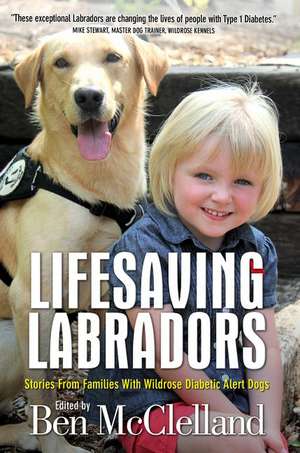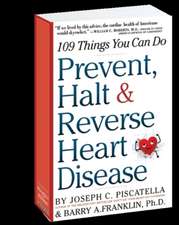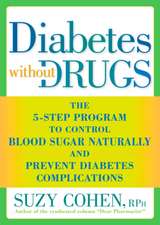Lifesaving Labradors
Editat de Ben McClellanden Limba Engleză Paperback – 20 mar 2014
“Diabetes is hell!” says Capri Smith, struggling with the debilitating disease that struck her daughter Ciara at age nine. Angie Simonton felt that a monster attacked her family when Lily succumbed before she was two years old. An equestrian in college, Devon Wright feared stigma and tried to shield her disease from public view. Animal EMT Megan DeHaven and Manhattan businessman Tom Arsenault worried that they would die in their sleep. Tom came to know borough EMTs by name, because he blacked out so frequently. Sharon Stinson, married and in her twenties, thought she would die like Shelby in Steel Magnolias. Sharon and her husband made many 911 calls and visited the local ER so frequently that they felt they had practically paid for the hospital.
Sweet Ciara, little Lily, and the rest of the people in this book are all Type 1 Diabetics. Like three million other Americans they suffer from an incurable autoimmune disease that destroys the insulin producing beta cells in the pancreas. Sugar rides a rollercoaster in each diabetic’s blood stream, sending the body into a catastrophic state. Death casts its shadow over each of them.
All of the parents in this group, the around the clock caregivers for their children, have frantically administered Glucagon shots or force fed sugar drinks in desperate attempts to steady erratic blood sugar events. Like Capri Smith, all of them have gone on daredevil car rides to the ER, frantic to save their daughters’ lives.
Desperate, each one sought a diabetic alert dog from Wildrose Kennels. Known as DADs, these British Labradors use their keen sense of smell to notify the diabetic or the caregiver of low and high blood sugar levels, thereby allowing prompt corrections to avert the episode or lessen its severity. Each one of these diabetics and the other authors in this collection has experienced attacks that led to seizure, or coma, dangerously close to death. Each one attests that the dog is a true lifesaver—daily. Lifesaving Labradors explains how the dogs do it, and how they are used to change and save lives.
Sweet Ciara, little Lily, and the rest of the people in this book are all Type 1 Diabetics. Like three million other Americans they suffer from an incurable autoimmune disease that destroys the insulin producing beta cells in the pancreas. Sugar rides a rollercoaster in each diabetic’s blood stream, sending the body into a catastrophic state. Death casts its shadow over each of them.
All of the parents in this group, the around the clock caregivers for their children, have frantically administered Glucagon shots or force fed sugar drinks in desperate attempts to steady erratic blood sugar events. Like Capri Smith, all of them have gone on daredevil car rides to the ER, frantic to save their daughters’ lives.
Desperate, each one sought a diabetic alert dog from Wildrose Kennels. Known as DADs, these British Labradors use their keen sense of smell to notify the diabetic or the caregiver of low and high blood sugar levels, thereby allowing prompt corrections to avert the episode or lessen its severity. Each one of these diabetics and the other authors in this collection has experienced attacks that led to seizure, or coma, dangerously close to death. Each one attests that the dog is a true lifesaver—daily. Lifesaving Labradors explains how the dogs do it, and how they are used to change and save lives.
Preț: 123.07 lei
Nou
Puncte Express: 185
Preț estimativ în valută:
23.55€ • 25.66$ • 19.84£
23.55€ • 25.66$ • 19.84£
Carte tipărită la comandă
Livrare economică 19-25 aprilie
Preluare comenzi: 021 569.72.76
Specificații
ISBN-13: 9781938467905
ISBN-10: 1938467906
Pagini: 268
Dimensiuni: 152 x 229 x 15 mm
Greutate: 0.39 kg
Editura: Koehler Studios, Inc.
ISBN-10: 1938467906
Pagini: 268
Dimensiuni: 152 x 229 x 15 mm
Greutate: 0.39 kg
Editura: Koehler Studios, Inc.
Notă biografică
Ben McClelland is Professor and Schillig Chair of English at the University of Mississippi, where he has taught courses in literature and writing for twenty-six years. He holds a Ph.D. in American Literature from Indiana University, where he wrote a dissertation on William Faulkner’s fiction. He also completed post-doctoral study at the University of Pittsburgh in composition and at Carnegie Mellon University in rhetoric.
He developed professional credentials in the area of nonfiction and life narrative writing by conducting research into the history, theory, and current place of nonfiction prose in English studies. In addition to articles and editions, he has written two professional books and a nonfiction memoir, Soldier’s Son, which was published by the University Press of Mississippi in March 2004, as a Willie Morris Book in Memoir and Biography. Since 2004 he has offered undergraduate and graduate courses in nonfiction writing.
He developed professional credentials in the area of nonfiction and life narrative writing by conducting research into the history, theory, and current place of nonfiction prose in English studies. In addition to articles and editions, he has written two professional books and a nonfiction memoir, Soldier’s Son, which was published by the University Press of Mississippi in March 2004, as a Willie Morris Book in Memoir and Biography. Since 2004 he has offered undergraduate and graduate courses in nonfiction writing.
Descriere
“Diabetes is hell!” says Capri Smith, struggling with the debilitating disease that struck her daughter Ciara at age nine. Angie Simonton felt that a monster attacked her family when Lily succumbed before she was two years old. An equestrian in college, Devon Wright feared stigma and tried to shield her disease from public view. Animal EMT Megan DeHaven and Manhattan businessman Tom Arsenault worried that they would die in their sleep. Tom came to know borough EMTs by name, because he blacked out so frequently. Sharon Stinson, married and in her twenties, thought she would die like Shelby in Steel Magnolias. Sharon and her husband made many 911 calls and visited the local ER so frequently that they felt they had practically paid for the hospital.
Sweet Ciara, little Lily, and the rest of the people in this book are all Type 1 Diabetics. Like three million other Americans they suffer from an incurable autoimmune disease that destroys the insulin producing beta cells in the pancreas. Sugar rides a rollercoaster in each diabetic’s blood stream, sending the body into a catastrophic state. Death casts its shadow over each of them.
All of the parents in this group, the around the clock caregivers for their children, have frantically administered Glucagon shots or force fed sugar drinks in desperate attempts to steady erratic blood sugar events. Like Capri Smith, all of them have gone on daredevil car rides to the ER, frantic to save their daughters’ lives.
Desperate, each one sought a diabetic alert dog from Wildrose Kennels. Known as DADs, these British Labradors use their keen sense of smell to notify the diabetic or the caregiver of low and high blood sugar levels, thereby allowing prompt corrections to avert the episode or lessen its severity. Each one of these diabetics and the other authors in this collection has experienced attacks that led to seizure, or coma, dangerously close to death. Each one attests that the dog is a true lifesaver—daily. Lifesaving Labradors explains how the dogs do it, and how they are used to change and save lives.
Sweet Ciara, little Lily, and the rest of the people in this book are all Type 1 Diabetics. Like three million other Americans they suffer from an incurable autoimmune disease that destroys the insulin producing beta cells in the pancreas. Sugar rides a rollercoaster in each diabetic’s blood stream, sending the body into a catastrophic state. Death casts its shadow over each of them.
All of the parents in this group, the around the clock caregivers for their children, have frantically administered Glucagon shots or force fed sugar drinks in desperate attempts to steady erratic blood sugar events. Like Capri Smith, all of them have gone on daredevil car rides to the ER, frantic to save their daughters’ lives.
Desperate, each one sought a diabetic alert dog from Wildrose Kennels. Known as DADs, these British Labradors use their keen sense of smell to notify the diabetic or the caregiver of low and high blood sugar levels, thereby allowing prompt corrections to avert the episode or lessen its severity. Each one of these diabetics and the other authors in this collection has experienced attacks that led to seizure, or coma, dangerously close to death. Each one attests that the dog is a true lifesaver—daily. Lifesaving Labradors explains how the dogs do it, and how they are used to change and save lives.






